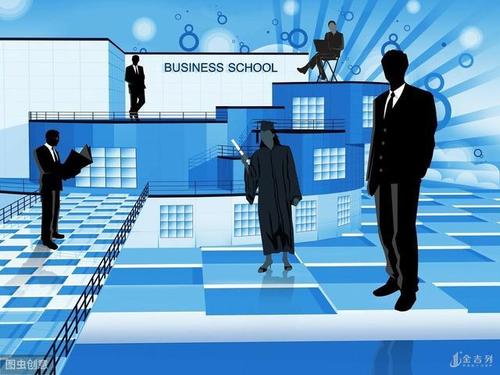MSRM CREDIT RISK MANAGEMENT
(all questions 10 points each)

1. Based on a linear regression model, a bank calculates that the PD for one of its portfolio companies is -1%.
- a. Interpret this PD and explain how it could have arisen.
- b. How does the use of a logit model resolve any problems with the value of this PD?
- c. What is the PD based on the logit model?
2. Using the KMV Model, you find that the assets (A) of a firm are $875 million, its debt (B) is $750 million, and the volatility of its assets (σA) is $53.6 million.
- a. What is its distance to default?
- b. Assuming a normal distribution, what is its probability of default?
3. Calculate the default probabilities in each of the two years using the following spot rates from the Treasury and corporate bond (pure discount) yield curves. Assume LGD = 50%.
- 1 Year 2 Year
- Treasury bonds 5.0% 6.1%
- BBB-rated bonds 7.0% 8.2%
4. A $100 million BBB loan has 3 possible credit migrations over the next year:
- Probability Value
- AAA 15% $110 million
- BBB 84.5% $100 million
- D 0.5% $50 million
a. What is the fair market price of the loan?
b. What is the loan’s capital requirement at the 99% level using the normal distribution?
c. What is the capital requirement using the actual distribution?
5. A bank has a loan outstanding to a Company A and a loan outstanding to Company B. Company A is exposed primarily to the systematic risk of the pharmaceutical industry, and regressing its returns on a pharmaceutical index gives a coefficient of 0.6. Company B is exposed primarily to the systematic risk of emerging markets, and regressing its returns on an emerging market index gives a coefficient of 0.4.
- d. If the correlation between the pharmaceutical index and the emerging markets index is -0.5, what is correlation coefficient between the returns for Company A and Company B?
- e. Relative to the case where the correlation between the two loans is assumed to be 0, how does the sign of the correlation coefficient from part (a) affect the overall risk of the two-loan portfolio? Briefly explain.
6. A bank is planning to make a loan of $10,000,000 to a firm in the steel industry. It expects to charge a servicing fee of ½%. The loan has a maturity of 10 years and a duration of 8.5 years. The return on equity (ROE) for the bank is 10%, and serves as the bank’s RAROC benchmark. Assume the bank has estimated the maximum change in the risk premium on the steel manufacturing sector to be approximately 2.2% based on one year of historical data. The current interest rate on the loan is 10%. The bank’s cost of funds is 8%. The tax rate is 20% and operating costs are ½ %.
Should the bank make the loan?
- 7. National Bank has the following balance sheet (in millions) and has no off-balance sheet activities.
- Assets Liabilities and Equity
- Cash $20 Deposits $980
- Treasury bills 40 Subordinated debentures 40
- Residential mortgages 600 Common stock 40
- Business loans (AA+ rated) 430 Retained earnings 30
- Total assets 1,090 Total liabilities and equity $1,090
a. What is the leverage ratio?
b. What is the Tier 1 risk-based capital ratio under Basel II?
c. What is the total risk-based capital ratio under Basel II?
d. Is it meeting its minimum regulatory requirement under Basel II?
e. What is the total risk-based capital under Basel III
8. Use the following information for the next two questions:
A five-year fixed-rate loan of $100 million carries a 7% annual coupon. The borrower is rated BB. Based on hypothetical historical data, the probability distribution given below has been determined for various ratings upgrades, downgrades, status quo, and default possibilities over the next year. Information also is presented reflecting the one-year forward zero curves and credit spreads of the various maturities of BBB bonds over Treasuries.
New Loan
Probability Value plus One Year Forward Zero Curves
Rating Distribution Coupon ($) and Credit Spreads at Time t
AAA 0.01% $114.82 t rt(%) st(%)
AA 0.31% $114.60 1 3.00% 0.72%
A 1.45% $114.03 2 3.40% 0.96%
BBB 6.05% See a below (*) 3 3.75% 1.16%
BB 85.48% $108.55 4 4.00% 1.30%
B 5.60% $98.43
CCC 0.90% $86.82
Default 0.20% $54.12
What is the present value of the loan at the end of the one-year risk horizon for the case where the borrower has been upgraded from BB to BBB?
What is the mean (expected) value of the loan at the end of year 1?
9. What is the variance of the loans value, what is the standard deviation?
Calculate 1% VAR for this loan assuming a normal distribution of values.
Estimate the 1% VAR using the actual distribution of loan values and probabilities.
10. MNO Inc., a publicly traded manufacturing firm in the United States, has provided the following financial information in its application for a loan. All numbers are in millions of dollars.
Assets Liabilities and Equity
Cash $ 40 Accounts payable $ 55
Accounts receivables 120 Notes payable 60
Inventory 210 Accruals 70
Long-term debt 550
Plant and equipment 1,100 Equity (ret. earnings = $300) 735
Total assets $1,470 Total liabilities and equity $1,470
Also assume sales = $1,250 m; cost of goods sold = $930 m; and the market value of equity is equal to 2.2 times the book value.
a. What is the Altman discriminant function value for MNO Inc.?
b. Based on the Altman’s Z score only, should you approve MNO Inc.’s application to your bank for a $50 m capital expansion loan?
